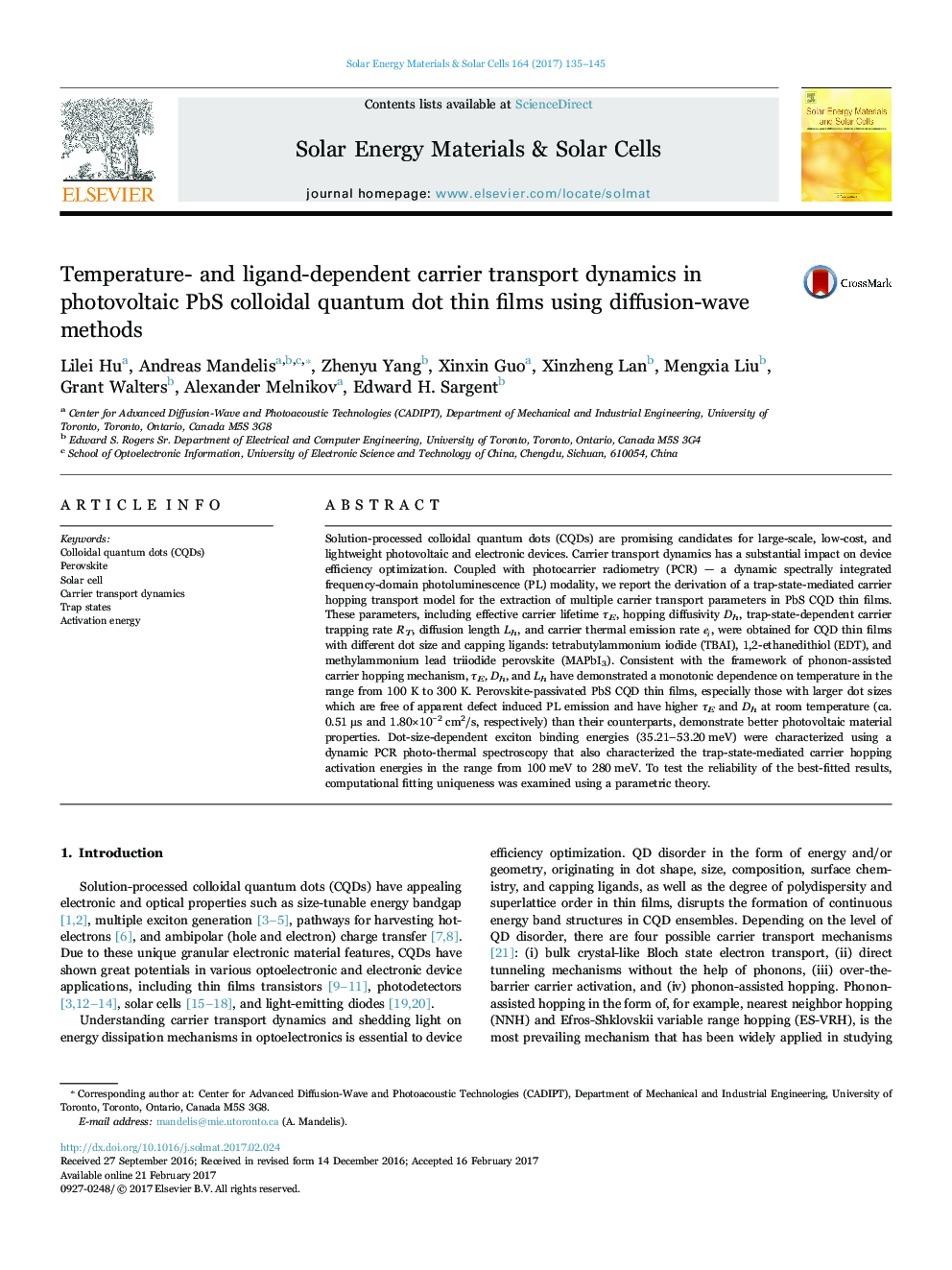| Article ID | Journal | Published Year | Pages | File Type |
|---|---|---|---|---|
| 6457117 | Solar Energy Materials and Solar Cells | 2017 | 11 Pages |
â¢Derived a first-ever trap-state-mediated carrier hopping transport model for CQDs.â¢Multiple carrier transport parameters (such as carrier lifetime) were extracted.â¢Carrier transport was found to be phonon-assisted and temperature-dependent.â¢Trap-state-mediated activation energies were measured between 100 meV and 280 meV.â¢QD-size-dependent exciton binding energies were measured.
Solution-processed colloidal quantum dots (CQDs) are promising candidates for large-scale, low-cost, and lightweight photovoltaic and electronic devices. Carrier transport dynamics has a substantial impact on device efficiency optimization. Coupled with photocarrier radiometry (PCR) - a dynamic spectrally integrated frequency-domain photoluminescence (PL) modality, we report the derivation of a trap-state-mediated carrier hopping transport model for the extraction of multiple carrier transport parameters in PbS CQD thin films. These parameters, including effective carrier lifetime ÏE, hopping diffusivity Dh, trap-state-dependent carrier trapping rate RT, diffusion length Lh, and carrier thermal emission rate ei, were obtained for CQD thin films with different dot size and capping ligands: tetrabutylammonium iodide (TBAI), 1,2-ethanedithiol (EDT), and methylammonium lead triiodide perovskite (MAPbI3). Consistent with the framework of phonon-assisted carrier hopping mechanism, ÏE, Dh, and Lh have demonstrated a monotonic dependence on temperature in the range from 100 K to 300 K. Perovskite-passivated PbS CQD thin films, especially those with larger dot sizes which are free of apparent defect induced PL emission and have higher ÏE and Dh at room temperature (ca. 0.51 μs and 1.80Ã10â2 cm2/s, respectively) than their counterparts, demonstrate better photovoltaic material properties. Dot-size-dependent exciton binding energies (35.21-53.20 meV) were characterized using a dynamic PCR photo-thermal spectroscopy that also characterized the trap-state-mediated carrier hopping activation energies in the range from 100 meV to 280 meV. To test the reliability of the best-fitted results, computational fitting uniqueness was examined using a parametric theory.
Graphical abstractDownload high-res image (310KB)Download full-size image
